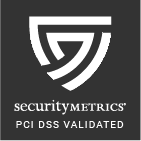 We take the security of your proprietary data about your business strategies and plans very seriously.
We take the security of your proprietary data about your business strategies and plans very seriously.
After all, you wouldn't want your competitors getting the jump on you!
Data Centre
Your data is stored in a Secure Tier 2 Data Centre, employing CCTV at all physical access points, 24-hour recording, and biometric security access. This is protected by hardware gateway firewalls with stateful failover in an active-passive configuration, BGP 4 routing for automatic rerouting of traffic in case of failure, diverse backhaul fibre connections to multiple independent Internet exchange points and many other measures. These measures are designed to deny attackers the ability to intercept data by providing a highly resilient and redundant network environment.
Data Communications
All data communications between you and our servers are protected using TLS 1.2 and TLS 1.3 protocols, which are industry-standard encryption methods that secure communications between clients and servers, preventing attackers from reading or altering data.
PCI Security Testing
StratNavApp.com undergoes regular security testing from SecurityMetrics.
Authentication
We use authentication (how you sign in) to ensure that you and only you can access your account and data:
StratNavApp supports two types of authentication:
- Google Single Sign On (SSO): Users using Google SSO benefit from all the protections Google provides to its users, including a range of multi-factor authentication (MFA) protocols.
or - Email and password: We enforce strong passwords. In addition, Enterprise users can enable multi-factor authentication (MFA) directly on their StratNavApp account for added security.
Out APIs are protected using authentication from Auth0, a leader in this field.
Collaboration
You can choose to share your data with colleagues and collaborators.
Each of your projects in StratNavApp is unique and distinct. You can share different projects with different collaborators, confident that they will be able to see the data in those projects only, and not in any of your other projects that you have not shared with them.
For example:
- A consultant can have different projects for different clients. They can share each project with members of the client's organisation confident that one client will not be able to see another's data.
- A CXO can share one project with their executive team and another project with the management team within their functional area of responsibility confident that they won't be able to see each other's data.
You can see who has access to each of your projects, and can add and remove users at will, keeping you in complete control.

